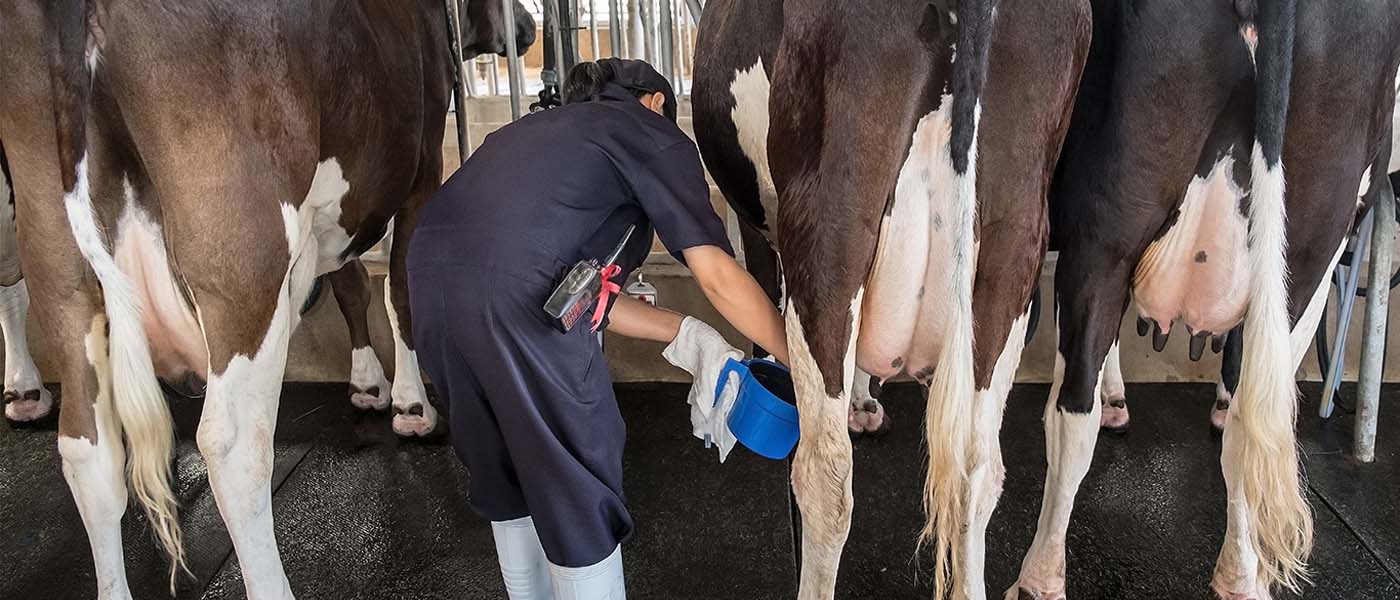
All too often I find myself having conversations on the phone with farmers regarding mastitis issues… and all too often I find myself trying to diagnose and treat the problem over the phone as well. This is not easy or a sensible way to go – mastitis, whether that be an increase in clinical cases or bulk SCC, is usually multifactorial.
This means that, over the phone we may try to make recommendations (usually based on the issues we find most commonly), but without getting out and watching what happens in the shed we can easily get it wrong.
The value of a milking mastitis investigation
A milking mastitis investigation is thorough, and it needs to be. If you miss out one aspect, your interpretation of the problem could be way out. What one farm can get away with may not work on another one, simply because of the other factors that may be playing a role in the mastitis. For example, Farm A may be able to use a light concentration (1-in-10) of teat spray, but, if Farm B moves from 1-in-4 to 1-in-10 concentration, their cell count may go up.
Well, there could be any number of reasons, but if Farm B has been running a slightly higher vacuum at the teat end, and the ACRs remove the cups quickly before the vacuum has dropped, then there may be some teat damage present. This, in conjunction with poorer teat disinfection, will result in more subclinical mastitis and so an increase in cell count. It is rare that we find just one key thing wrong on a farm that is contributing to a high SCC, but rather numerous small problems which, occurring on their own, do not cause an obvious issue, but all together will.
What’s involved in a milking mastitis investigation
A milking investigation involves various elements, but most will be covered in one milking visit, with other time off farm taken up analysing your clinical case and SCC data. At the milking visit we usually begin by discussing the history with you, and then, when milking starts, investigate various elements: the milking procedure, teat spray effectiveness, cow comfort and environment, teat end damage, and how the plant is functioning with vacuum and pulsation levels at the teat end.
How milk cultures help
Milk cultures also give a good picture of what is going on and are an important aspect of the investigation. However, 1 or 2 samples do not give you an overview of the herd, and it is important that the milk samples are representative of the problem. So, to get a real picture we need around 20 samples or more from cows that represent the issue, whether that be cows who are repeatedly high cell count or heifers with clinical mastitis. We have Mastaplex machines in many Vetlife clinics now – they can test fresh milk samples either in clinical or subclinical cases and then return a result in 24 hours.
So, if your bulk cell count is above 150,000 or mastitis cases are cropping up too frequently (normal is less than 2% herd/ month), then we would recommend you investigate why.
Vetlife has several vets trained at carrying out milking investigations, so please do contact your clinic to find out who may be able to do this for you.
Written by Amy Avery